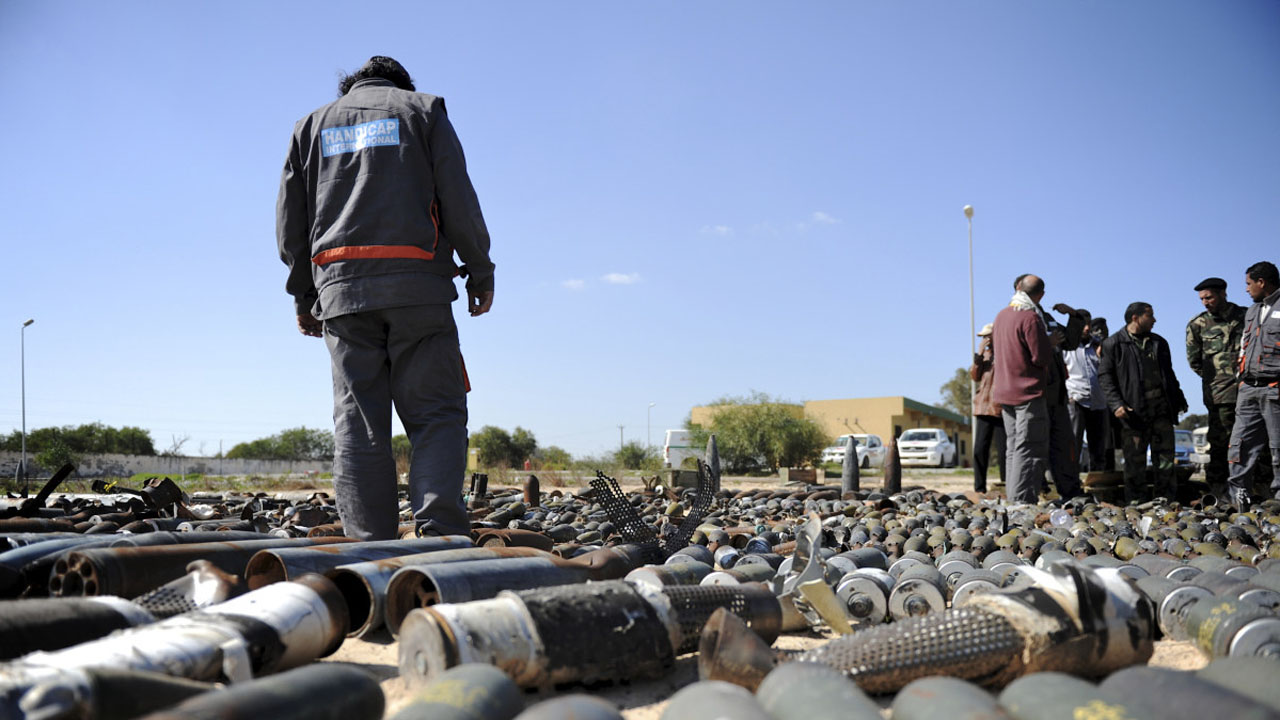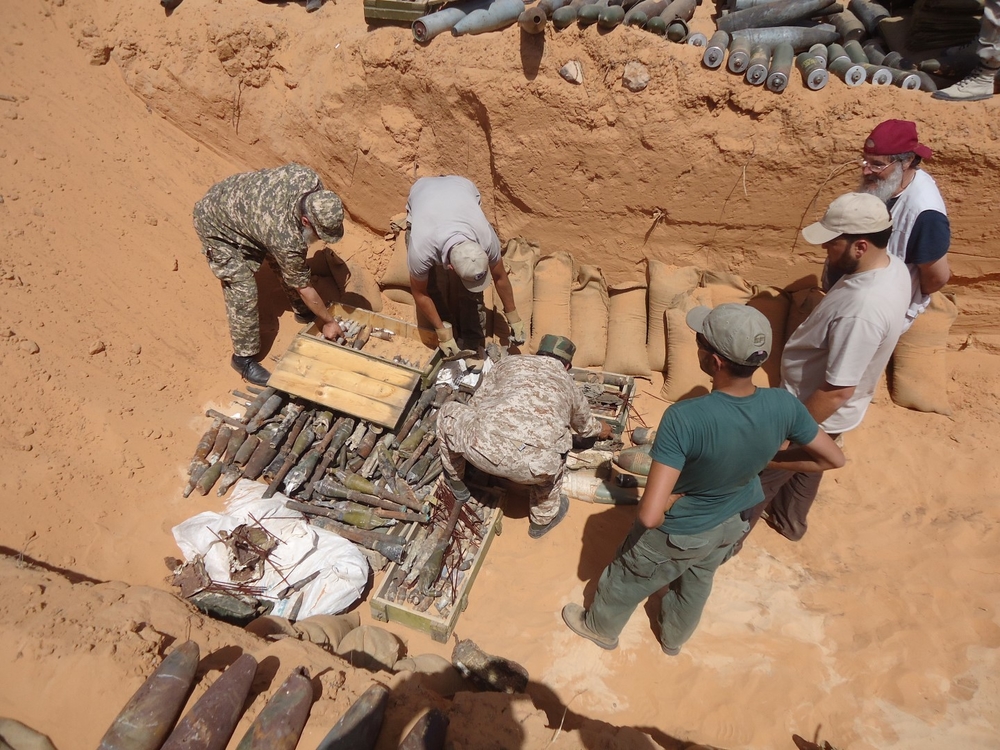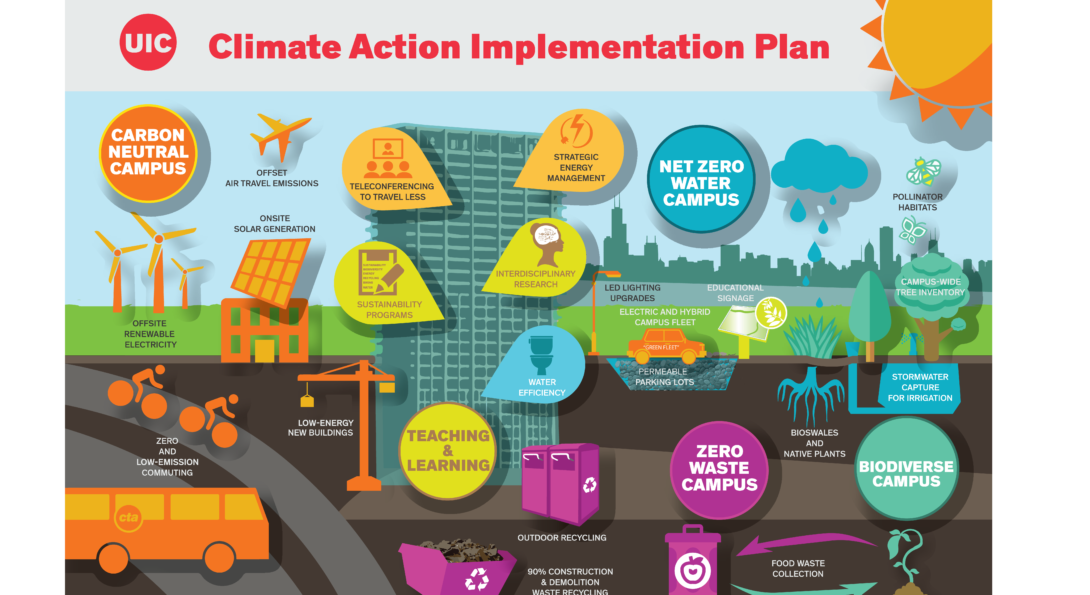
Landmines: A Global Threat
To More than 60 Million People
Linsey Cottrell / Conflict and Environment Observatory
(July 2024) — Wars damage the environment in many ways. Landmines and other explosive remnants of war (ERW) can remain in the ground for decades after conflicts end. Not only do they present a threat to people and ecosystems while in place, clearing ERW can also adversely impact the environment if not properly managed. This can be due to cratering, soil erosion, vegetation removal or localized pollution.
They are a global threat. Even before Russia’s invasion of Ukraine an estimated 60 million people lived in areas affected by ERW contamination. For example, Afghanistan, Cambodia, Iraq and South Korea are all classed as massively contaminated by anti-personnel mines. In some cases, the full extent of contamination remains unknown.
In 2023, Ukraine estimated that approximately 174,000 km2 of its territory needed to be surveyed for contamination, and is now considered to be among the most mined countries in the world. The extent of contamination in Azerbaijan,(1) Morocco and Myanmar is also unknown, but likely to be massive. For cluster munitions,2 there are no reliable estimates for Vietnam and Lao PDR, but more than 1,000 km2 are believed to be contaminated.

The Relationship between Climate Change,
Landmines and Other Explosive Remnants of War
Conflict-affected countries are among the most vulnerable to the effects of climate change. Climate finance to support fragile and conflict-affected states is grossly inadequate and, in an example of climate injustice, without significant changes in access to climate funds, these communities will become more vulnerable and less able to cope.
Climate change can impact areas affected by ERW contamination in several ways. Extreme weather events such as flooding and heatwaves can increase the risks posed by ERW contamination; remobilising ERW or triggering landscape fires. ERW clearance and removal operations will need to adapt to meet the challenges of climate change, while local communities may need assistance and support to build climate resilience.
Examples of how climate change can directly affect ERW contamination and clearance operations are given in the table below. In each case, people living in communities affected by contamination will also be exposed to these climate risks, and the compounding impacts of other socio-economic factors and environmental degradation.
A Global Threat
Wars damage the environment in many ways. Landmines and other explosive remnants of war (ERW) can remain in the ground for decades after conflicts end. Not only do they present a threat to people and ecosystems while in place, clearing ERW can also adversely impact the environment if not properly managed. This can be due to cratering, soil erosion, vegetation removal or localised pollution.
They are a global threat. Even before Russia’s invasion of Ukraine an estimated 60 million people lived in areas affected by ERW contamination. For example, Afghanistan, Cambodia, Iraq and South Korea are all classed as massively contaminated by anti-personnel mines. In some cases, the full extent of contamination remains unknown.
In 2023, Ukraine estimated that approximately 174,000 km2 of its territory needed to be surveyed for contamination, and is now considered to be among the most mined countries in the world. The extent of contamination in Azerbaijan,1 Morocco and Myanmar is also unknown, but likely to be massive. For cluster munitions,2 there are no reliable estimates for Vietnam and Lao PDR, but more than 1,000 km2are believed to be contaminated.
Climate Change, Landmines and
Other Explosive Remnants of War
Conflict-affected countries are among the most vulnerable to the effects of climate change. Climate finance to support fragile and conflict-affected states is grossly inadequate and, in an example of climate injustice, without significant changes in access to climate funds, these communities will become more vulnerable and less able to cope.
Climate change can impact areas affected by ERW contamination in several ways. Extreme weather events such as flooding and heatwaves can increase the risks posed by ERW contamination; remobilizing ERW or triggering landscape fires. ERW clearance and removal operations will need to adapt to meet the challenges of climate change, while local communities may need assistance and support to build climate resilience.
Examples of how climate change can directly affect ERW contamination and clearance operations are given in the table below. In each case, people living in communities affected by contamination will also be exposed to these climate risks, and the compounding impacts of other socio-economic factors and environmental degradation.

Need for Sectoral Action on Climate and Environment
Climate change not only complicates mine action activities, it also impacts local communities, places pressure on local resources and land, and may force people to move and resettle. The new IMAS 07.13 specifically highlights the need to be ‘open to opportunities for embedding climate adaptation and environmental initiatives which could benefit local communities.’ This means there will be a need to collect the right environmental data, at an appropriate level of detail, to support decision-making and to communicate outcomes to stakeholders.
Donors are acknowledging the wider benefits that mine action can achieve. The new Mine Action Strategy 2024-2028 from the German Federal Foreign Office states that ‘partner organisations are encouraged to enter into cooperation arrangements with relevant partners in order to facilitate nature restoration following successful land surveys and ERW clearance, and to foster the sustainable and ecologically valuable use of released land’.
This is encouraging and we now need to see the prioritisation of projects, and the flexible funding that can deliver these multiple benefits to conflict-affected communities.
- Contamination in Azerbaijan is unknown, but certainly massive given the254 km long and 5 km wide former line of contact between Armenian and Azeri armed forces.https://ceobs.org/landmines-climate-change-and-new-environmental-guidance/ – easy-footnote-1-10709
- Acluster munition has a container that disperses ‘bomblets’ that can be deployed by rockets or air-dropped bombs. They are used to kill people or destroy vehicles (or both).https://ceobs.org/landmines-climate-change-and-new-environmental-guidance/ – easy-footnote-2-10709
- See table: Contributions by donors: 2018–2022, p88 in theLandmine Monitor, 2023 https://ceobs.org/landmines-climate-change-and-new-environmental-guidance/ – easy-footnote-3-10709
Linsey Cottrell is CEOBS’ Environmental Policy Officer. Thanks also to Kristin Holme Obrestad at Norwegian People’s Aid and Sarah Njeri at SOAS University, both co-authors of Mine Action and Climate Change for the Austrian National Defense Academy, Institute for Peacekeeping and Conflict Management
